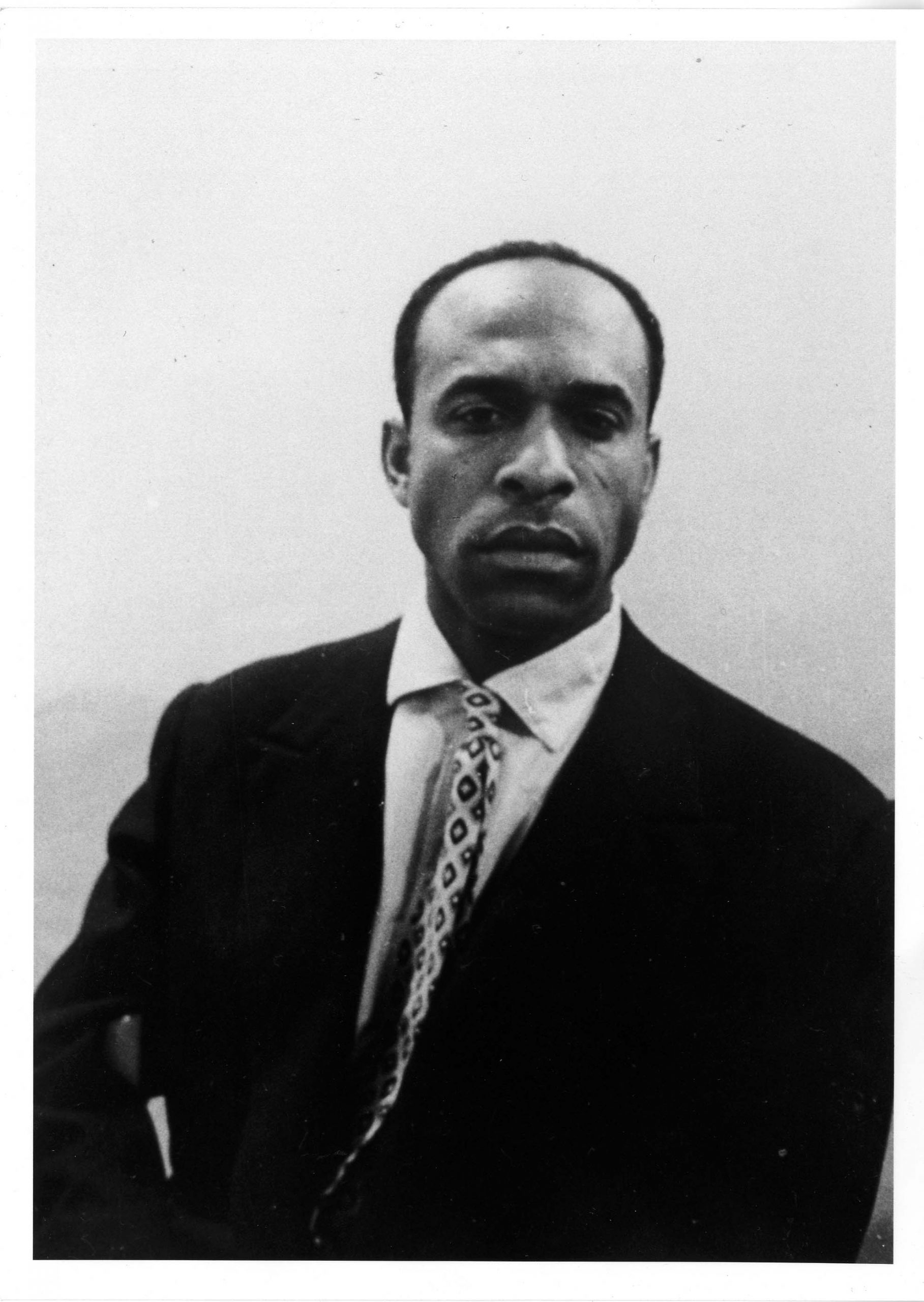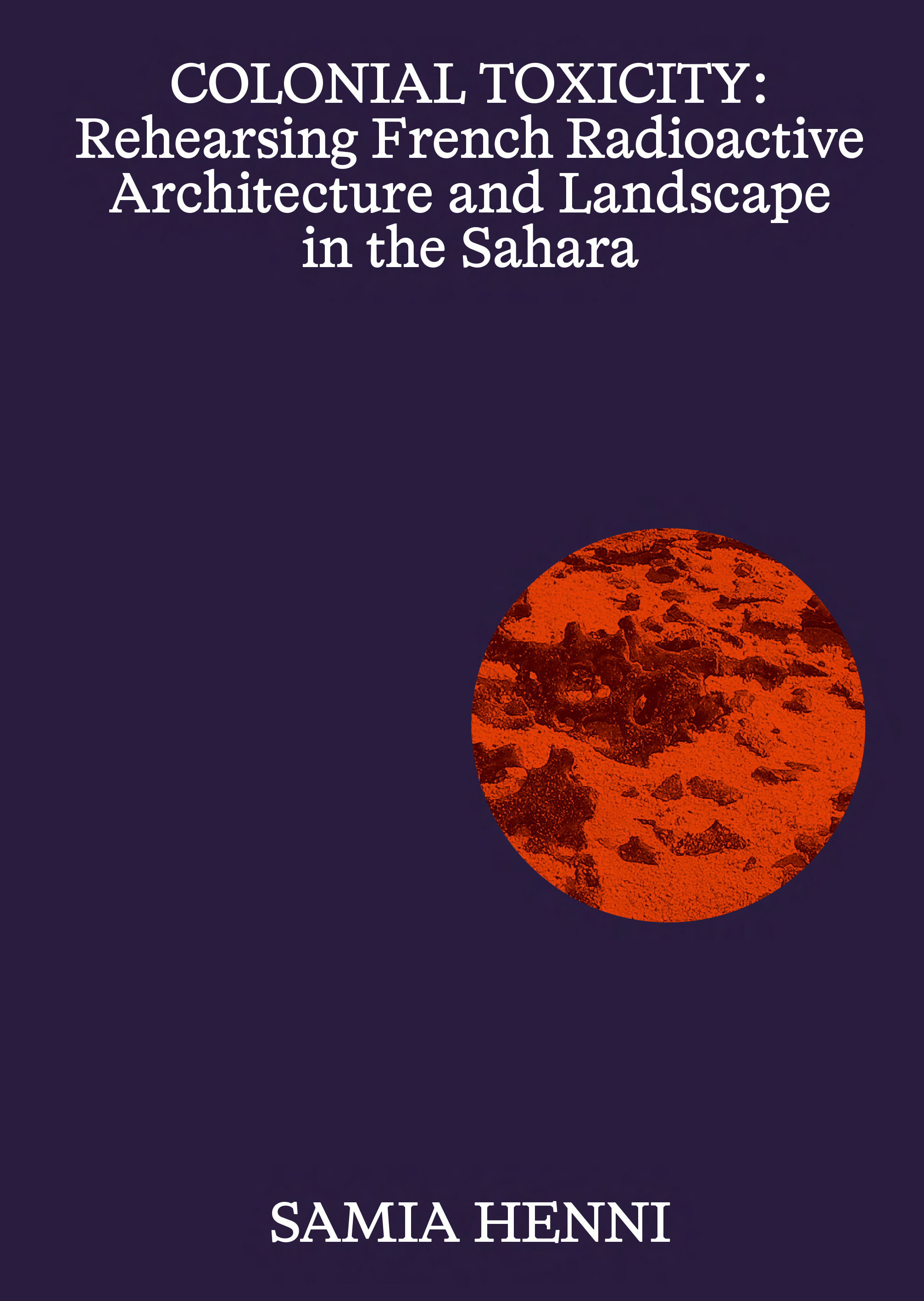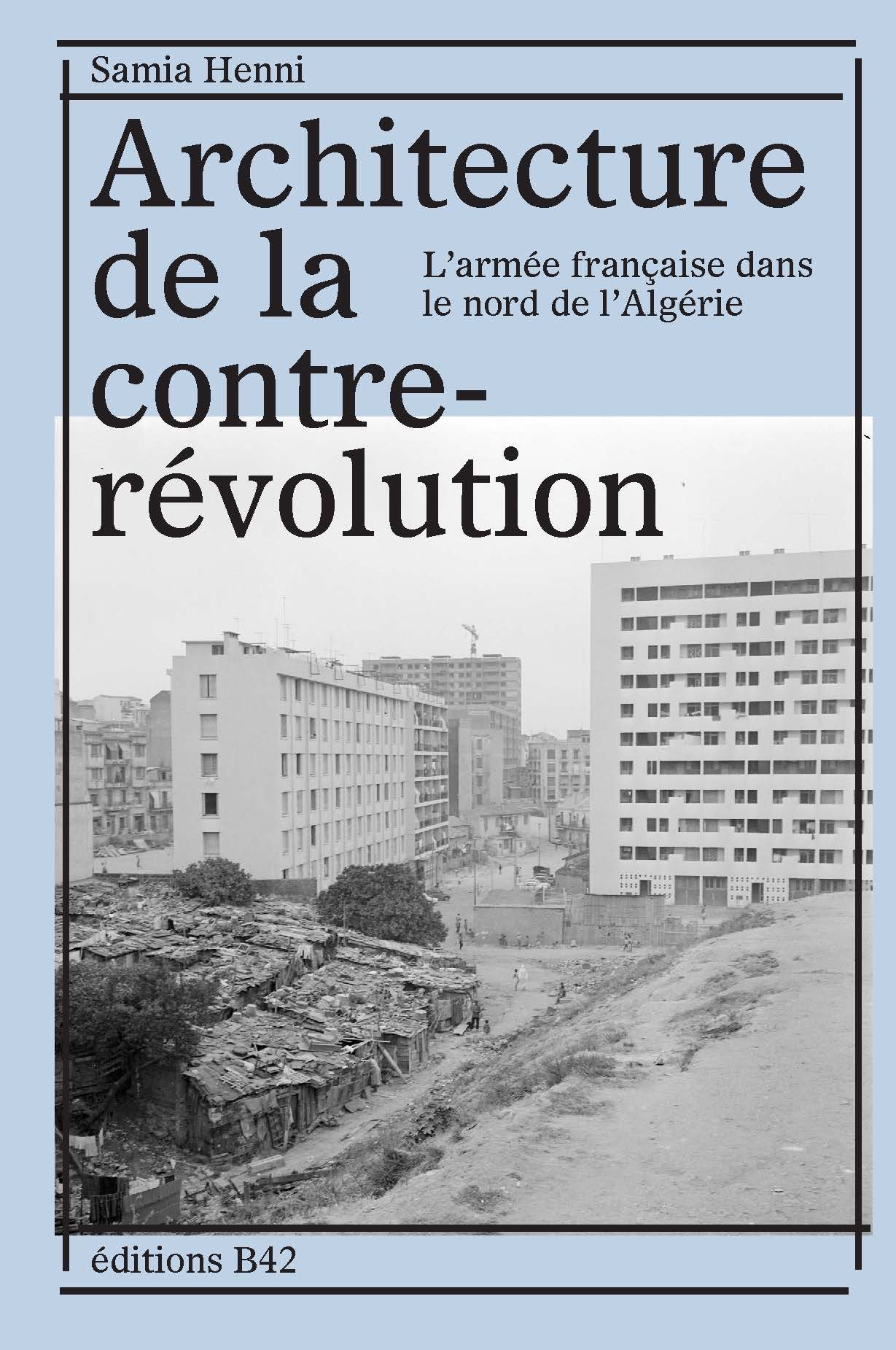|

Samia Henni, "On Frantz Fanon and the Manichean World" Mousse Magazine (April 2024).
Read

Samia Henni, "Jerboasite: Naming French Radioactive Matter in the Sahara" e-flux Architecture: Half-Life, edited by Nick Axel, Nikolaus Hirsch, Himali Singh Soin, Irene Sunwoo (December 2022).
Read

Samia Henni, "Terra Nucleus: Radiating Desert Lives." The Funambulist: The Desert, no. 44 (Nov-Dec 2022): 60-67.
Read

Habiter l'indépendeance: Alger, conditions d'une architecture de l'occupation
Texts by Ateliers d'Alger, Lydia Amarouche, Yousra Boutheina Reghis, Malek Cheikh, Samia Henni, Djaffar Lesbet, Nora Semmoud
Marseille: Shed Publishing, 2022.
Preview
"Nuclear Powers: France’s Atomic Bomb Tests in the Algerian Sahara" The Architectural Review (23 June 2022)
Read

Samia Henni, "The Battle for Internationalization and Independence." The Funambulist: Algerian Independence and Global Revolution 1962-2022, no. 42 (Jul-Aug 2022): 48-56.
Read

Samia Henni, "Oil, Gas, Dust: From the Sahara to Europe" e-flux Architecture: Coloniality of Infrastructure, edited by Nick Axel, Kenny Cupers, Nikolaus Hirsch (October 2021).
Read

Samia Henni, "Exhibition as a Form of Writing: On 'Discreet Violence: Architecture of the French War in Algeria,'" in Parse: On the Question of Exhibition, edited by Nick Aikens, Kjell Caminha, Jyoti Mistry, and Mick Wilson (Spring 2021, Issue 13).
Read

Samia Henni, "Anticolonial Remedies: From Colonization to Globalization," Perspecta 53: Onus, edited by Caroline Acheatel, Paul J. Lorenz, Paul Rasmussen and Alexander Stagge (2020): 193-203.
|

Samia Henni, "The Coloniality of an Executive Order." Canadian Center of Architecture (June 23, 2020).
Read

"Reading Colonial Landscapes in Algeria and Palestine: A Conversation Between Samia Henni and Mostafa Minawi" The Funambulist: Learning with Palestine, no. 27 (January-February 2020): 42-49.
https://thefunambulist.net/magazine/learning-with-palestine
Preview

Samia Henni, Housing Pharmacology. Marseille: Manifesta 13, 2020.
With Fathi Bouaroua, Aicha Boutayeb, Vincent Girard, Habib, police officer, Laura Spica, Vendredi 13 (Monique Blanc, Bernard Nos).
Publication: Samia Henni (texts editing), Laura Spica (copyediting), Flora Fettah (proofreading), Good and Cheap Art Translators (Translation), Anbar Oreizi-Esfahani (Mapping assistant), ékho studio (Claire Bonnet, Charlie C. Thomas, Graphic concept, typesetting and design)
Read

Samia Henni, "Female Agency and Psychological Warfare: French Colonial Civil and Military Interventions in Algeria, 1954-1962." In Productive Universals-Specific Situations. Clinical Engagements in Art, Architecture, and Urbanism, eds. Anne Kockelkorn and Nina Zschocke. Berlin: Sternberg Press, 2019.
Preview

Samia Henni, "Introduction: From Colonial Wars to Counterinsurgency." In gta papers 2: War Zones, ed. Samia Henni. Zurich: gta Verlag, 2018.
Read

Samia Henni, "Reflections on the Authority of Architecture, Or a Brief and Unfinished Cartography of Disciplinary Spaces." In Kapwani Kiwanga: Structural Adjustments eds. Yesomi Umolu, Gaetane Verna. Chicago: University of Chicago Press and The Power Plant Contemporary Art Gallery, 2017, 77-79.
Preview
|

Samia Henni, "Colonial Prescriptions in Paris." In Perspecta 52 "Ensemble," Yale Architectural Journal edited by Charlotte Algie and Alicia Pozniak (2019): 245-254.
Preview

Samia Henni, "Boumedienne, Niemeyer: When Militarism Meets Modernism." Preface to Jason Oddy, Oscar Niemeyer in Algeria. New York: Columbia Books on Architecture and the City, 2019.
Preview

Samia Henni, "Colonial Ramifications" E-Flux Architecture, History/Theory, gta Institute, ETH Zurich (October 31, 2018).
Read

Samia Henni, "Norms and Forms of Dispossession: The Politics of Naming" Pidgin 23, Princeton University School of Architecture Journal (February 2018): 16-29.

Samia Henni, "Toxic Imprints of Bleu, Blanc, Rouge: France's Nuclear Bombs in the Algerian Sahara." The Funambulist: Toxic Atmospheres, no. 14 (November-December 2017): 28-33.
Preview

Samia Henni, "Black Color and 'Negro Village:' Why Skin Color Still Matters in Architecture," Trans Magazin: Farbe (Color), no. 30, Spring 2017: 158-161.

Samia Henni, "What the Hell do They Mean When They Say 'Independence'?" Written and read for Barby Asante, broadcasted at the Diaspora Pavilion, 57th Art Exhibition, Venice Biennial, 10 May-26 November 2017.
Listen

Samia Henni, "From 'Indigenous' to 'Muslim:' On the French Colonial Assimilationist Doctrine." Positions, E-Flux Architecture (December 1, 2017).
Read

Samia Henni, "On the Spaces of Guerre Moderne: The French Army in Northern Algeria (1954-1962)," Footprint: Spaces of Conflict, Delft Architecture Theory Journal, no. 19, Autumn 2016 edited by Malkit Shoshan and Marc Schoonderbeek: 37-57.
Read
|


























